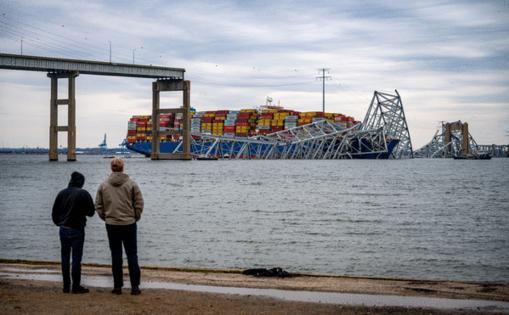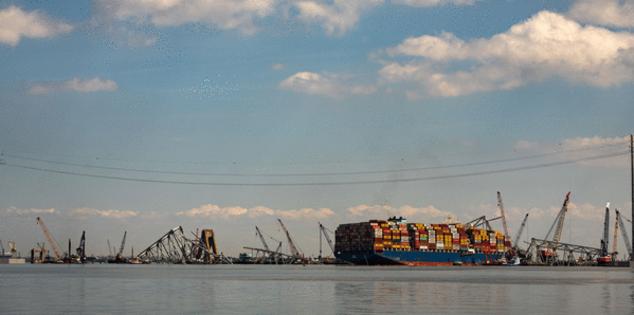Baltimore's port expected to rebound from Key Bridge disaster once channel reopens
Published in News & Features
BALTIMORE — From a large window in his Dundalk office, Alec Hajimihalis can count the now-quiet cranes at Seagirt Marine Terminal, a constant reminder — along with empty spaces in his warehouses — of how business was upended when the Francis Scott Key Bridge collapsed.
At Ace Logistics, a warehousing and delivery company that Hajimihalis and his brother founded 35 years ago, 90% of the business is tied to the Port of Baltimore. The port’s terminals face weeks more without vessels calling while salvage crews work to clear the wreckage of the steel bridge blocking the channel.
Ace relies on its own crews, trucks and warehouses to handle imported food, minerals, metals, lumber and other products that are picked up, unloaded, processed and shipped, typically 800 to 1,200 inbound and outbound containers per week.
“We’re the guys that supply the supermarkets, that when you walk in and you see no canned tuna fish on the shelf, it’s because we’re not getting it in our warehouse fast enough,” Hajimihalis said. “Now, nothing is coming through the Port of Baltimore, so we’re having to divert trucks and hire trucks to pick up in New Jersey, Philadelphia and Norfolk. … Our inbound freight movement is running at a snail’s pace.”
Part of a vast and complex system that moves the world’s goods and materials by ship, truck and rail, Ace and its roughly 200 employees are among the many businesses and workers struggling to hold on in the wake of the port’s abrupt closure March 26. Early that morning, the Dali freighter struck the bridge while leaving the port, collapsing the span, killing six road workers and blocking the port to vessel traffic. The Army Corps of Engineers expects to restore port access to “normal capacity” by the end of May.
While the pinch has been felt most acutely in Maryland, where port activities generate nearly 20,000 jobs and account for more than 50,000 more indirectly, the ripples have spread to manufacturers, steamship lines, container companies, truckers, dock workers, suppliers and others. It affects everything from shipments of cars and other goods to sugar imports and coal exports.
“We have customers overseas that are saying, ‘I’m loading a container with olives. What port do I want to send it to?'” Hajimihalis said. “We give them a choice of three, but we don’t know which one’s better or worse … We’re assuming and hoping that it is temporary.”
Ports along the East Coast are taking ships diverted from Baltimore, with some autos delivered in Georgia and containers dropped off in Virginia. Tradepoint Atlantic, the only Baltimore terminal open to large vessels because of its location south of the bridge at Sparrows Point, has doubled its capacity for monthly automobile shipments by increasing storage and extending hours.
At Ace, it will be months before the economic damage is known, Hajimihalis said Friday, after he supervised the loading of Dodge Ram pickups into a container. Instead of a short trip to the port, a driver was delivering them to a rebooked vessel in Philadelphia to head overseas. He worries some business won’t come back.
“We’re now using our drivers, as well as any other drivers in other ports,” he said. “I’m competing for those drivers with everyone else. Freight rates have doubled.”
...continued
©2024 Baltimore Sun. Visit baltimoresun.com. Distributed by Tribune Content Agency, LLC.










Comments